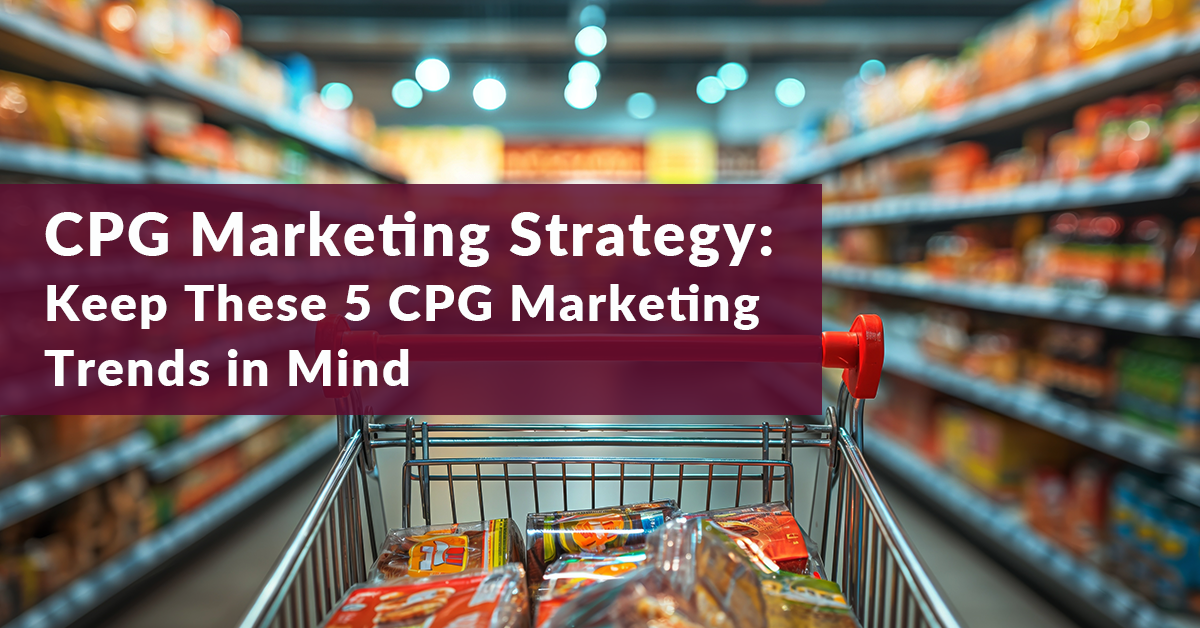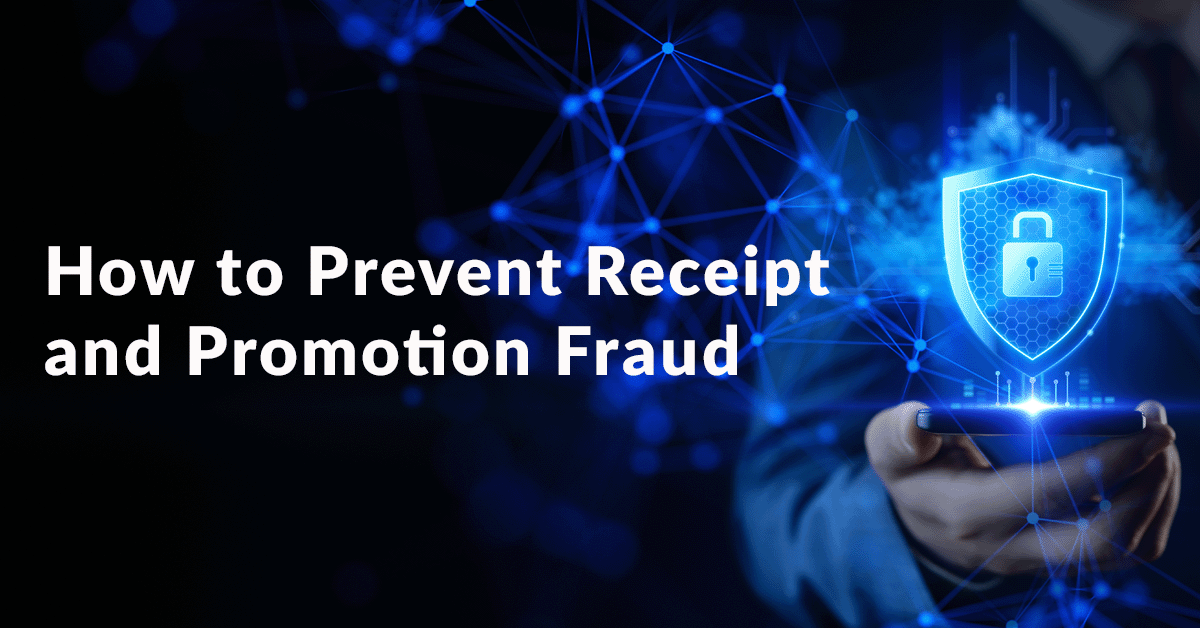5 Keys to a Winning CPG Marketing Strategy
Let's look at five keys to a winning CPG marketing strategy that takes advantage of one or more of the abovementioned trends. These days, a winning CPG marketing strategy is all about first-party data. First-party data is information you collect directly from your customers. It's purchase data, shopping data, personal information, demographics, etc. With access to this type of data, you can tailor your marketing to be more targeted, contextual, and personalized.
The challenge with the CPG sales model is that they often don't have access to first-party data because they sell through distributors and resellers. But it is possible to get it today through several marketing programs, including:
- CGP Promotions and Rebates: Consumers are always looking for a deal or something exciting to participate in. Promotions, contests, and sweepstakes that include cool prizes, gifts, cashback, purchase guarantees, or discounts can help drive up engagement and allow you to collect receipts or submissions, including first-party data for use in future campaigns. You can work with micro-influencers to help promote these contests and sweepstakes, giving you even more reach.
- Loyalty Programs: A loyalty program is ,a great way to engage with customers who purchase your products frequently. Customers can earn points for purchases and access exclusive deals and discounts. With a loyalty program, you can get your customers to tell you even more about themselves to earn more points or activate higher levels. See our guide to Loyalty Program for CPG Brands to learn more.
- Product Trials, Fee Samples, Limited Release Drops: Another great way to engage customers and collect first-party data is to offer product trials and free samples. Include these offers with the ability to get a coupon to purchase full versions at a discount if they share their experience on social media. Limited release drops are another way to drive urgency to purchase a product and come with exclusivity, enticing customers to buy them.
- Collaboration with Delivery Apps: Partnerships with popular delivery apps can help you get access to a broader customer base and give you insights into customer preferences and geographic distribution. Work with these apps to do promotions and offer discounts and exclusive deals.
- Leverage Retail Media Networks: CPG brands need to develop a channel strategy that enables them to reach customers both online and offline. As retail media networks grow, brands can access first-party data and reach even wider audiences than physical stores alone. In 2023, 52% of brands using retail media networks said they did so to get access to first-party data; 55% said it enabled them to reach new/incremental audiences. You can also run promotions and discounts and pay to get your products showing up in the promoted areas of search results. In addition, newer types of networks like bank card-linked Payments Media Networks will deliver similar benefits.
All of these marketing strategies provide more data needed to understand the decisions and behavior of your target consumers. You can then use this information to create more personalized experiences, find the right influencers to work with, and determine which locations would benefit most from on-the-ground experiential experiences.
5 Examples of CPG Marketing Campaigns
The best way to know what CPG marketing campaigns work best is to learn from those finding success. Here are five examples to get you thinking.
1 IAMS Acquired New Households with Sweepstakes Campaign
IAMS partnered with Snipp for a sweepstakes campaign to boost sales and expand its customer base. Utilizing a sweepstakes registration page embedded on the IAMS website, consumers could sign up to receive a $5 coupon and a chance to win a year's worth of free vet care and IAMS food. Prizes included a year's supply of IAMS, a $1,000 Visa Prepaid Card for grand prize winners, and three months of IAMS coupons for secondary winners.
2 E.l.f’s TikTok Challenge
Gen Z-oriented brand E.l.f. created a #eyeslipsface challenge on TikTok tying into the E.l.f. acronym. Users could upload a video of themselves dancing to an original song and post using the hashtag to win $250 worth of E.l.f. products. The campaign earned over 9.7 billion views, mainly due to organic participation by celebrities who got in on the trend. E.l.f also has a loyalty program - BeautySquad - that has over 3 million members.
3 Incentivizing Sales of Arm & Hammer Baking Soda
To incentivize holiday sales of its Arm & Hammer baking soda, Church and Dwight created a purchased-based reward program. Customers who purchase at least two qualifying products could submit their receipt by text, email, or web upload and get download codes for $15 off on $50 at Gifts.com
4 Driving Sales and Basket Size for WK Kelllogg Co Cereals
WK Kellogg Co wanted to reward consumers and drive basket size increases by incentivizing consumers with Kellogg’s branded cereal bowls. They launched a purchase-based gift-with-purcahse (GWP) program where consumers could buy two specially marked boxes of cereal, upload their receipt and choose from one of three cereal bowls. This was a great way to increase basket size and get receipt-based insights.
5 Liquid Death Builds a Cult Brand with Canned Water
Liquid Death sells water in a can. It sounds boring, but the brand has built a cult following by leveraging influencer relationships, viral content, experiential marketing events, limited-release editions, and a loyalty program (Liquid Death Country Club). It is a case study of leveraging trends (including its approach to sustainability marketing) that every brand should look at.
5 CPG Marketing Challenges to be Overcome
CPG marketing has evolved from dealing with in-store promotions and marketing strategies to include a range of digital marketing strategies. Regardless of what strategies you choose, there are some CPG marketing challenges you may need to overcome, including these five:
- Access to first-party data - We've discussed the importance of having first-party data about your customers to enable you to build more relevant, contextual experiences (and products).
- Weak brand loyalty - CPG consumers have nearly unlimited choices, and it's easy to switch to another brand if they aren't happy with yours. If you have weak brand loyalty, you will struggle, so you must implement marketing strategies to help you build and retain loyal customers.
- Unhappy customers - Weak brand loyalty goes hand in hand with customer satisfaction. Unhappy customers are sharing more and more negative online reviews. It's important to watch for these and find ways to turn unhappy customers into happy ones. And to find ways to get happy customers to leave positive reviews!
- The right technology - Technology is an enabler that will help you implement your marketing strategies. Look for modern solutions that help you manage sales promotions, loyalty programs, purchase and non-purchase submission/validation, and influencer relationships.
CPG Marketing for Specific Industries
Before we wrap up our look into CPG marketing, it's important to talk about marketing for specific CPG industries. Although all of the trends, challenges, and guidance discussed here apply to any industry, you can also learn about specific trends and strategies for specific categories. Here are some highlights from the Snipp guides on these specific industries:
- Pet Care - Millennials are most likely to purchase five or more gifts for their pets.
- Alcohol - 48% of U.S. alcohol drinkers say they consider a company’s sustainability or environmental initiatives before purchasing alcohol.
- Cosmetics - 52% of millennials said they are more likely to get inspiration from other users or influencers when shopping through social commerce than when shopping through e-commerce, followed by 48% of Gen Z respondents.
- Personal Care - Over two-thirds of U.S. men are broadening their grooming routines beyond the basics, with nearly half of 18-24-year-olds welcoming makeup.
- Home Cleaning - 36% of consumers bought more store-brand and generic products in 2022 due to rising prices, and 2023 saw similar trends.
Check out the links to each category guide to learn more trends and get some specific marketing strategy ideas.
Wrap Up
Mastering CPG marketing requires an adaptive approach that integrates emerging trends, overcomes challenges, and tailors strategies to specific industry dynamics. By staying agile and responsive, CPG brands can effectively navigate the evolving market landscape and drive sustainable growth. Contact us to talk with our experts about how to integrate promotions, loyalty and first-party data into your CPG marketing strategy.






